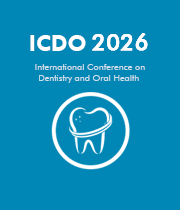Title: Evaluating hygienist follow up for head and neck oncology patients in secondary care: Results from a two cycle audit
Abstract:
Background: Head and neck oncology patients treated with chemoradiotherapy are at high risk of adverse health effects including xerostomia, caries, periodontitis and osteoradionecrosis. Poor oral hygiene is a significant risk factor for post-surgical treatment failure in head and neck cancer patients. Hygienists therefore provide vital care by aiding patients with head and neck cancer to maintain implant hygiene and providing patient education to improve oral hygiene reducing the risks of treatment complications and preventing surgical failure. General Dental Practitioners (GDPs) also have a key role in maintaining long term care and prevention for these patients. An audit was designed to assess and ensure that head and neck oncology patients are receiving hygienist follow up care on the Oncology Support Clinic (OSC) on the restorative department at Newcastle Dental Hospital. The audit also assessed whether patients were registered with general dental practitioners.
Aims: Primary aim to ensure head and neck cancer patients seen on the OSC are receiving hygienist follow up with recall. Secondary aim to assess whether patients seen are registered with GDPs to continue oral health maintenance in primary care.
Standard: 100% of head and neck cancer patients seen by the OSC should be seen by a hygienist at Newcastle Dental Hospital in line with Royal College of Surgeons England guidelines on the oral management of oncology patients.
Methods: A dataset of 36 patients seen on the OSC was collected retrospectively. Data collected included cancer diagnosis, treatment, initial OSC consultation date, whether hygienist follow up was offered and received, hygienist recall interval and GDP registration status. After baseline results were collected we intervened by providing a checkpoint within the appointment booking records to ensure that all patients seen on the OSC that day had been offered a hygienist appointment since they were first seen on the clinic. Then we produced a second cycle of the audit.
Results and Discussion: All patients received a combination of chemoradiotherapy, resective surgery and placement of zygomatic or dental implants for their cancer treatment. After the intervention was implemented between the audit cycles hygienist follow up of OSC patients increased from 56% to 90%. Increasing follow up should lead to improved patient outcomes by reducing risk of failure of rehabilitative surgery and adverse sequalae of chemoradiotherapy. Only 50% and 70% of patients were GDP registered in cycles 1 and 2 respectively. This highlights significant long term risk of oral health deterioration and unidentified recurrence of malignancy as without a GDP there is no provision of oral health maintenance after discharge from the OSC.
Conclusion: The audit resulted in a significant improvement in adhering to the standard set for hygienist follow up of cancer patients. However it has also raised the need for increased access for head and neck oncology patients to primary dental care services and potentially requires a quality improvement project to improve the liaison between secondary and primary care to ensure patients in this cohort are followed up by GDPs.




